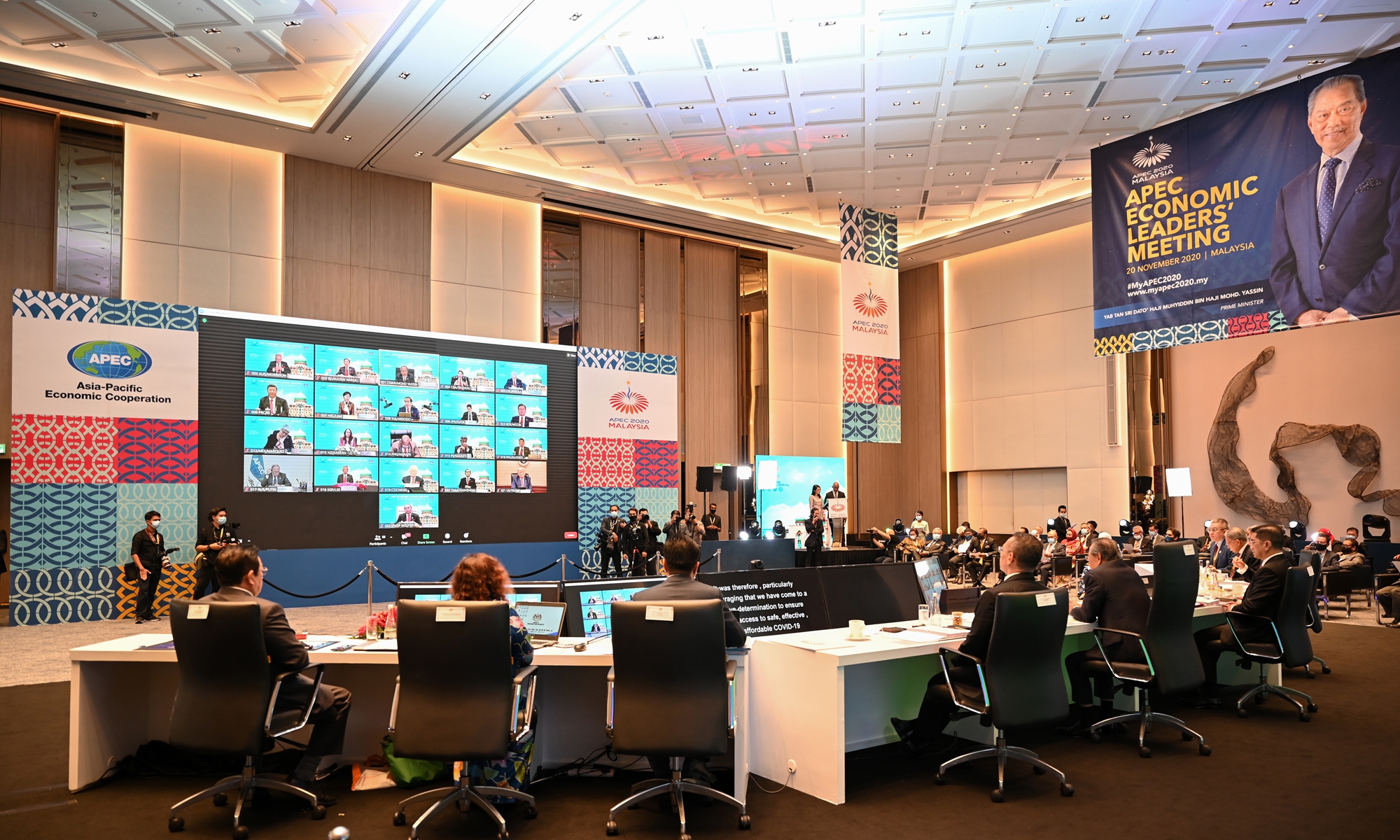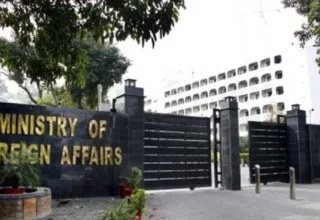
By Global Times
BEIJING, China – In a week that saw multilateralism triumph in the world, after the signing of the world’s largest trade pact accounting for about one-third of world’s population and global trade, the Asia-Pacific Economic Cooperation (APEC) yielded fruitful results by launching a vision for the next two decades, underlining the irreversible trend of multilateral cooperation, of which China has been one of the most important driving forces.
On Friday, a substantial outcome came out of the APEC with the announcement of the APEC Putrajaya Vision 2040, fostering the vision for an open, dynamic, resilient and peaceful Asia-Pacific community by 2040, according to the 2020 Kuala Lumpur Declaration.
During a virtual meeting on Friday at the 27th APEC Economic Leaders’ Meeting, Chinese President Xi Jinping reaffirmed China’s commitment to multilateralism and building an open world economy, and said China will “favorably consider” joining the Comprehensive and Progressive Agreement for Trans-Pacific Partnership (CPTPP).
US President Donald Trump also attended. Video footage of the meeting exposed a protectionist Trump, who was the only one of the 21 APEC leaders to appear without a backdrop logo wall bearing the APEC theme.
Leaders of the Asia-Pacific region – the world’s primary growth engine – launched the vision that will serve as a key framework that will guide the multilateral platform in the years to come.
“We must stay as determined as ever to support the multilateral trading system with the World Trade Organization (WTO) at its core, promote free and open trade and investment, and make economic globalization more open, inclusive, balanced and beneficial to all,” Xi said via video link.
Xi said China welcomes the signing of the Regional Comprehensive Economic Partnership (RCEP) that forms the world’s largest free trade area, and will favorably consider joining the CPTPP, successor to the Trans-Pacific Partnership (TPP) trade deal. TPP was considered to be one of the most important achievements of the Obama administration, but Trump abruptly withdrew from the deal after taking office.
Li Haidong, a professor at the Institute of International Relations of the China Foreign Affairs University, said the statement by the Chinese president showed China’s willingness and open attitude toward regional multilateral mechanism as “China will try to join any multilateral mechanism it can join and contribute its bits.”
“Because of China’s status as the world’s largest developing nation and the region’s growth engine, China would become a major force to promote the CPTPP if it joins, which is also promoting a shared destiny,” Li told the Global Times on Friday.
Wang Yiwei, director of the institute of international affairs at Renmin University of China, told the Global Times on Friday that China is in a period of strategic opportunity. China’s positive declaration of favorably considering joining the CPTPP is important to safeguard the multilateral trade system amid the pandemic, while the US pursues unilateralism. China is now the most powerful leader of globalization. Under the backdrop of the COVID-19, China’s advocacy of multilateralism will activate the connectivity and vitality of important trade platforms like the RCEP, Wang said.
Multiple wins for multilateralism
Prior to the APEC meeting, 15 countries in the Asia-Pacific region signed the RCEP – the world’s largest trade agreement – on November 15, offering fresh momentum for multilateral regional and global cooperation in trade and investment.
Speaking at the APEC CEO Dialogues on Thursday, Thai Prime Minister Prayut Chan-o-cha said the success of RCEP “at this pivotal moment will reinvigorate regional economic integration and multilateral trade.”
Japanese Prime Minister Yoshihide Suga said in a video on Friday that while continuing to promote WTO reform, Japan will aspire for the Free Trade Area of the Asia-Pacific (FTAAP) through the early conclusion of RCEP agreement, and the steady implementation and expansion of CPTPP.
With the launch of APEC 2040 Vision, APEC leaders have sent out a clear message on their commitment to multilateralism and international cooperation, analysts said, noting that such cooperation is essential to fight the pandemic and for a sustainable economic recovery.
APEC’s GDP contracted by 3.7 percent in the first six months of 2020 and is expected to contract by 2.5 percent for the whole year, or equal to an output loss of $1.8 trillion, according to the APEC Policy Support Unit.
However, East Asia is the world’s first region to bring the virus relatively in check and signs of economic recovery are already being observed in many parts in the region, with China as a leading force in that recovery.
The 2040 vision would replace the Bogor Goals and serve as the primary reference point for the region in the coming decades.
Chen Fengying, a research fellow at the China Institutes of Contemporary International Relations, told the Global Times on Friday that a joint statement by APEC could be a vital mechanism for dialogue in the Asia-Pacific by continuing to champion free and open trade and investment, even though many of the past goals of APEC were not met or accomplished on account of rising protectionism and unilateralism.
“A positive message to the world would show that the Asia-Pacific is one of the most vital regions for world economic growth,” Chen said.
Weakening US influence
The US only fielded a low-level presence at last weekend’s virtual East Asia Summit, when RCEP was signed and the US Chamber of Commerce said it was concerned the US was being left behind.
Faced with criticism for ignoring its allies in Asia, Trump showed up at the Friday meeting, having tweeted a few times roughly at the same time as the APEC meeting about the US election results. Netizens were quick to find out in the video frame that he was the only leader who appeared without a APEC backdrop.
He Weiwen, a former senior trade official and an executive council member of the China Society for World Trade Organization Studies, said that Trump’s appearance was more of an existence-validating show-up for the outgoing US president, as he is by no means interested in APEC and actually stands on the opposite of APEC.
Given the US’ narrow-mindedness, other Asia-Pacific economies have been more willing to accept regional cooperation without the US, especially when it comes to preventing economic recession amid the global pandemic, Song Guoyou, deputy director of the Center for American Studies at Fudan University, told the Global Times on Thursday.
Unlike Trump, president-elect Joe Biden will probably attach more importance to the APEC as he is more accommodating to multilateralism and regional economic cooperation, given the fact that the APEC mechanism was strengthened during the era of former US president Bill Clinton, also a Democrat, Song said.
Even if the new US administration wants to pick up multilateralism again, the priority initially will be Europe, not Asia, He said.
“Only when the US returns to Asia-Pacific regional cooperation mechanisms can we talk about its leadership in the region,” Song said, noting that Asia-Pacific countries’ economic independence and self-awareness has awakened.
“Will the US regain its lost influence? That will depend on whether US policies are aligned with common interest in Asia and adhere to multilateralism,” he concluded.








